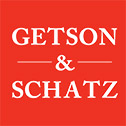02 Aug U.S. employers use H-1B visas to hire high-skilled foreign workers
The Brookings Institute reported that the H-1B visa program allows employers to hire foreigners to work in specialty occupations on a temporary basis. Visas are granted in three-year increments with the option to extend up to six years. With sponsorship from their employers, H-1B visa holders may apply for permanent residence, and their H-1B visas can be renewed for one year extensions until their green card is issued. There is a cap on the number of H-1B visas that can be issued each fiscal year. Academic and research institutions are not subject to this cap.
An analysis of the geography of H-1B visa requests — particularly in the metropolitan areas with the highest demand between 2001 and 2011 — reveals that:
Demand for H-1B workers has fluctuated with economic and political cycles over the last decade and reflects a wide range of employers’ needs for high-skilled temporary workers. Employer requests have exceeded the number of visas issued every year except from 2001 to 2003 when the annual cap was temporarily raised from 65,000 to 195,000. Employers requesting the most H-1B visas are large companies subject to the cap specializing in information technology, consulting, and electronics manufacturing. Science, technology, engineering, and mathematics (STEM) occupations account for almost two-thirds of requests for H-1B workers; healthcare, finance, business, and life sciences occupations are also in high demand. Over the last decade the federal government has distributed about $1 billion from H-1B visa fees to fund programs to address skills shortages in the U.S. workforce.
One hundred and six metropolitan areas had at least 250 requests for H-1B workers in the 2010–2011 period, accounting for 91 percent of all requests but only 67 percent of the national workforce. Considerable variation exists among these metro areas in the number of workers requested and the ratio of requests to the size of the total metro workforce. On average, there were 3.3 requests for H-1Bs per 1,000 workers in these 106 metro areas, compared to 2.4 for the nation as a whole.
Metropolitan areas vary by the number of employers using the H-1B program and the cap status of the employers. Demand in corporate metro areas (such as Columbus, IN and Seattle, WA) comes predominantly from private employers subject to the annual visa cap, while in research metro areas (such as Durham, NC and Ann Arbor, MI), the demand is driven by universities and other research institutions exempted from the cap. In mixed metro areas (such as Atlanta, GA and Trenton, NJ), a variety of employers are demanding temporary highskilled foreign workers.
In 92 of the 106 high demand metropolitan areas, STEM occupations accounted for more than half of all requests. Computer occupations were the most highly requested occupation group in all but 11 metros of the 106 high-demand metros, where engineering, healthcare practitioners, and postsecondary teachers were more requested. Metropolitan areas also vary on occupational concentration, ranging from 74 occupation groups requested in the New York metro area, to 15 groups requested in Bloomington, IL.
H-1B visa fees designated for skills training and STEM education have not been proportionately distributed to metro areas requesting the highest number of H-1B workers. Metropolitan areas with a high demand for H-1B workers are only receiving $3.09 on average per working age person 16 years or older of the technical skills training grants compared to $15.26 for metros that have a lower demand for H-1Bs from 2001-2011. STEM education funds are similarly distributed with the high H-1B metros receiving only $1.00 per working age person 16 years or older compared to $14.10 in the low H-1B metros.
The U.S. government should develop an independent standing commission on labor and immigration removed from politics that can adjust the cap for H-1B visa applicants based on local employer skills needs and regional economic indicators. The federal government should also channel H-1B visa fees to skills training in areas that are currently being filled by H-1B workers at the metropolitan level.

